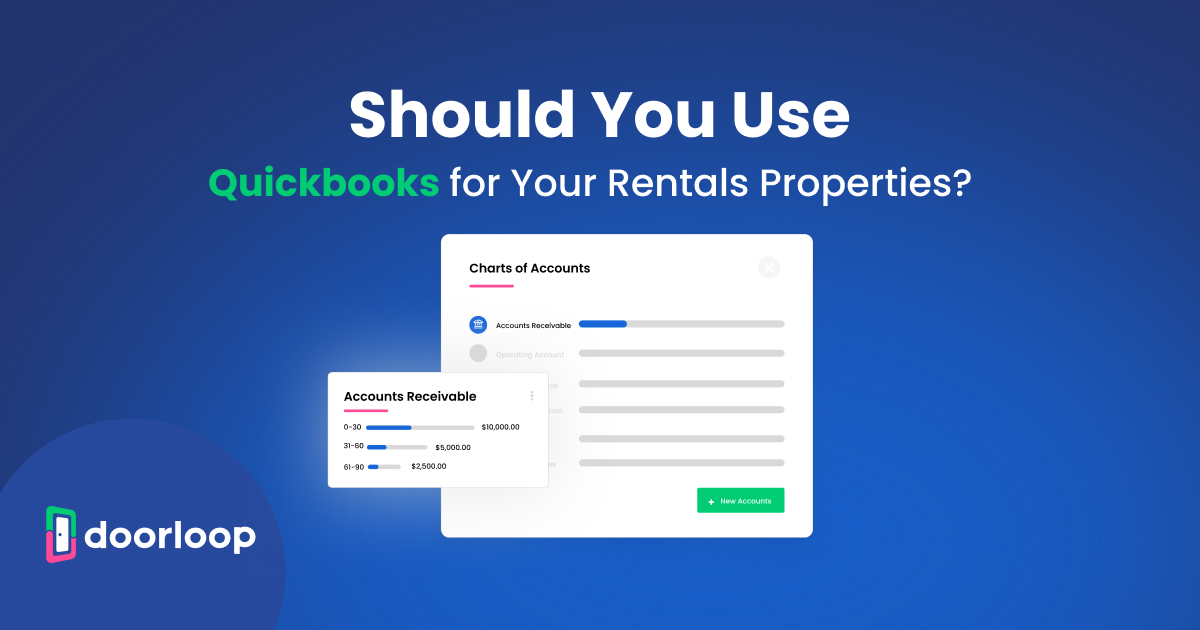Have you ever wondered if you’re charging the right rent for your property or if there’s room for improvement?
Understanding loss to lease can help you unlock the potential of your rental property and maximize your income.
Here we’ll explore the concept of loss to lease, its importance in property management, and how to calculate it. We’ll also provide real-life examples and strategies for minimizing loss to lease, as well as answer some frequently asked questions.
Understanding Loss to Lease
Loss to lease is a crucial metric for landlords and property managers. When calculated accurately, it can reveal missed opportunities for property improvements or rent increases that could drive up the property value and net operating income.
It's an important factor to consider when making informed decisions about property management.
Defining Loss to Lease
Loss to lease is the difference between the actual rent being paid by tenants and the potential market rent for a property, considering comparable properties in the area. The term “loss” here refers to the fact that the landlord is not collecting rent at current market prices and is thus missing out on potential revenue.
In general, a high loss to lease may indicate that a property is not being managed efficiently or that there’s room for rent increases and property improvements.
However, sometimes landlords give a month free of rent to attract a new tenant. This sometimes also influences loss to lease and, when strategic, can be a great decision. Concessions like this are a great way to secure long-term leases and good tenants.
Importance in Residential Real Estate
In residential real estate, loss to lease can help landlords and property managers identify areas for improvement and potential rent increases. For example, if a landlord is not charging market rent for a unit or not taking advantage of rent concessions, they could be experiencing loss to lease.
By monitoring loss to lease, landlords can make informed decisions about rent increases and property improvements that can maximize their rental income.
Importance in Commercial Real Estate
In commercial real estate, loss to lease is crucial for acquisition due diligence and property performance evaluation. Multifamily investors, for example, view loss to lease as an opportunity to raise rents and yield a quick return.
By narrowing the loss to lease differential, property owners can rapidly increase the value of their multifamily real estate assets and make a quick profit, as commercial multifamily properties are usually evaluated based on cash flow and net operating income.
How to Calculate Loss to Lease
To accurately calculate loss to lease, you should understand key terms like gross potential rent and net effective rent and familiarize yourself with the right formula.
Key Terms to Know
Here are some key terms that will help you understand loss to lease when calculating it:
- Market rent: The current rent that a property could command in the market.
- Actual rent: The rent being paid by your tenant.
- Gross potential rent (GPR): The maximum possible rental income a property could generate if all units were rented at market rates.
Knowing these terms can help landlords and property managers accurately calculate loss to lease and make informed decisions about their properties.
Loss to Lease Formula
Loss to lease is calculated by subtracting the net effective rent (the actual rent being paid) from the unit's GPR (the maximum rent a property could command in the market).

Real-Life Examples of Loss to Lease
Let's look at a multifamily property example of loss to lease.
In a multifamily property, let’s say the market rent for a unit is $1,500 per month, but the landlord charges only $1,300 per month. The loss to lease would be $200 per month.
In this case, the landlord could consider raising the rent to the market rate or making property improvements to attract higher-paying tenants, thus reducing the loss to lease and increasing the property’s overall value.
However, before raising the rent or making improvements, you should consider a few factors:
- Costs and potential return of property improvements
- Demand in the market
- Risk of your tenants not renewing their lease due to the rental increase
- Potential turnover costs if your tenants leave due to the rental increase
We'll go into some of these challenges more below.
Risks and Challenges of Raising Rents
While raising rents can help reduce loss to lease and increase property value, you should consider the risks and challenges associated with rent increases.
Tenant Turnover and Vacancies
Raising rents to cover loss to lease can lead to higher tenant turnover and vacancies, which can negatively impact property income.
When considering a rent increase, landlords must weigh the potential benefits against the risks of tenant turnover and the costs associated with finding new tenants. Tenant turnover can cost thousands of dollars, so sometimes increasing rents is not a cost-efficient way to address loss to lease.
By offering lease renewal incentives to current tenants and more flexible lease terms to attract new tenants, landlords can help minimize tenant turnover and vacancies.
However, it’s also important for landlords to stay informed about local regulations and laws regarding rent increases, as well as market trends and tenant preferences, to strike a balance between maximizing rental income and maintaining tenant satisfaction.
Balancing Property Improvements
Balancing property improvements with rent increases is essential to minimize loss to lease while maintaining tenant satisfaction.
For example, landlords can invest in basic rental property renovations, remodeling, or energy-efficient upgrades to make their property more attractive and valuable, which in turn can justify rent increases. Some of these upgrades, such as energy-efficient appliances and laminate flooring, can also reduce utility or maintenance costs to help further reduce your loss to lease and maximize profits.
However, the costs of these improvements must be weighed against the potential return and market demand to ensure that they are a worthwhile investment.
Gain to Lease: The Flip Side of Loss to Lease
Gain to lease is the opposite of loss to lease.
Gain to lease refers to a situation where the actual rents collected is more than the potential market rent, resulting in additional rental revenue for the property owner. For example, if a landlord is charging $1,200 per month for a unit that could be rented for $1,000 per month, they would be experiencing a gain to lease of $200 per month.
This can be a desirable situation for property owners, as it indicates that their rental income is above market rates.
Like loss to lease, calculating and keeping track of gain to lease is useful for landlords and property managers looking to evaluate the performance of their properties and make informed decisions about rent increases, property improvements, and more.
As usual, it’s essential to have accurate market rent estimates when considering both loss and gain to lease; they directly impact the calculations and potential outcomes.
Strategies for Minimizing Loss to Lease
There are several strategies that landlords and property managers can employ to minimize loss to lease, such as upgrading vacant units, maximizing multifamily revenue, and tracking loss to lease using property management software.
In the following sections, we’ll explore these strategies in more detail and discuss their potential benefits and drawbacks.
Upgrading Vacant Units
Upgrading vacant units can increase rent and minimize loss to lease, but landlords must carefully consider the costs and potential return on investment before undertaking property improvements.
For example, landlords may consider updating unit interiors, improving curb appeal, or allowing pets to make their property more attractive to potential tenants and justify higher rents.
However, it’s essential to weigh the costs of these upgrades against market demand and the potential return on investment. Over-improving a property or investing in upgrades that don’t align with market preferences may not yield the desired results and could even lead to increased vacancy rates and loss to lease.
Maximizing Multifamily Revenue
In addition to upgrading vacant units, maximizing gross and net revenue in multifamily properties can help reduce loss to lease.
This can be achieved by increasing income through renting out communal spaces, offering optional services, and increasing leasing fees, as well as decreasing expenses by cutting back on overhead costs like utilities, maintenance, and staffing.
By implementing these strategies, landlords and property managers can maximize their multifamily revenue and minimize their loss to lease.

How Property Management Software Can Help Track Loss to Lease
Property management software can be an invaluable tool for landlords and property managers in tracking and managing loss to lease. These software solutions can help monitor tenant turnover and vacancies, as well as calculate loss to lease based on market and actual rents.
By staying informed and making data-driven decisions, landlords and property managers can more effectively manage loss to lease and maximize the profitability of their properties.
DoorLoop is an excellent software that helps automate your property management, whether you are a property manager yourself or a landlord.
With DoorLoop, you can easily keep track of your monthly rent income, screen prospective tenants, increase rents, hold a security deposit, generate income statements, and more for multifamily housing, commercial properties, and other types of units.
See how DoorLoop's accounting features can make tracking loss to lease easier than ever for you.
Frequently Asked Questions
Is loss to lease the same as concessions?
No, loss to lease is not the same as concessions. Loss to lease focuses on the difference between actual and market rents for occupied units, while concessions are temporary incentives offered to tenants, such as discounted rent or waived fees. However, concessions can cause loss to lease.
What is loss or gain to lease?
Loss or gain to lease refers to the difference between actual rent and potential market rent for a property. Loss to lease occurs when actual rent is lower than market rent, while gain to lease occurs when actual rent is higher than market rent.
Does loss to lease include vacancy?
No, loss to lease does not include vacancy. Loss to lease focuses on the difference between actual and market rents for occupied units, not the potential rent lost due to vacant units.
How does loss to lease differ in monthly and fixed-term lease agreements?
Loss to lease calculations may differ in monthly and fixed-term lease agreements, as market rents can fluctuate over time. In both cases, loss to lease is calculated as the difference between actual rent and potential market rent. However, the market rent may change depending on the lease term and market conditions.
































.svg)
.svg)

